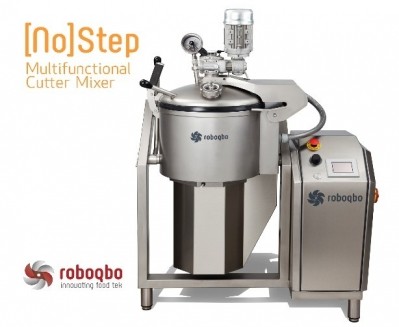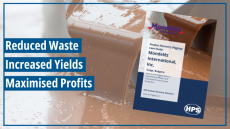Special Edition: Cost effective confectionery processing
Seven tips for processing equipment purchasing for SMEs

Tip one: Weigh up advantages of buying used
“I often advise an emerging company to first look for really small scale things or to look for something good on the used market that they can get into without breaking the budget,” said John Hrivnak, sales director at Carle&Montanari-OPM’s US division.
“If you’re more advanced and really want to go fast and more efficient buying something used is usually a risk. But if you’re just starting out and doing a machine that’s ready to do 100 per minute but you only could do 50 – 50 a minute could be great for you as a start-up.”
Bob Parmley, partner and CFO at Savage Bros, offered his perspective.
“I think you should be looking at new equipment that can scale when the market has pulled you forward, when you’ve proven you’ve have something the market wants.”
“There’s a lot of equipment out there that’s been unused. But newer equipment has more technological advantages perhaps. Obviously it costs more but usually from a financing standpoint it’s easier to finance new equipment that it is used.”
Hrivnak advised confectioners to exercise caution when buying used. “You have to find a person that you trust because it’s like buying a used car – ‘as is’ could mean ‘as is’.”
He said that certain used companies gave customers a certificate to verify that they had assessed the machine and noted any defects.
Tip Two: Look for energy efficient equipment
Equipment shoppers should also consider the cost of running the machine.
“Utility bills are part of your business expense, so good to get something that’s energy efficient,” said Parmley.
He gave the example of choosing gas cooking over electric, which would mean a company would require ventilation systems.
“Some of the newer equipment has more technology to it in terms of how it’s controlled for temperature-wise so you’re not wasteful of energy,” he added.
Tip three: choose a hygienic design
Carle&Montanari-OPM’s Hrivnak said that no matter what scale equipment a company was looking for they should always look for a machine that hygienic and easily cleaned.
“Today allergens are a big topic and if you do a changeover it can be an eight hour job if it’s with equipment that is not designed to be friendly to change overs. It could be a half hour to one hour job if it’s designed to be washed and cleaned reasonably or interchangeable parts.”
Tip four: Keep it simple and flexible
Ensuring equipment is easy to operate may also help firms taking their first plunge into manufacturing.
Parmley said that a lot of small businesses had few employees so they should look to equipment that was easy to handle and did not require a lot of lifting.
Mark Sheffield, regional sales manager, Asia Pacific, for Baker Perkins, added: “Flexibility has to be the obvious one. If they want something that’s going to help them develop a range of products, we can configure machines that give them the flexibility to produce a toffee or a fondant which they can produce by configuring in the machine in a different setup.”
Tip five: Limit number of operators
Smaller businesses should look for machines that require as few operators as possible.
Hrivnak said: “So are you achieving 90% because you have five guys huddling over the machine or are you achieving 90% because one operator can work five machines, hands off and only intervene once in a while?"
Companies can save on labor costs by limiting the number of operators.
Tip six: Ensure easy access to replaceable parts and service
Hrivnak said that the total cost of ownership for a machine should take into account the availability of replaceable parts and service operators.
“Because something will happen - just like when your lawnmower breaks down. How fast can you get a replacement part and how fast can you get a service guy in? You don’t want a downtime crash to kill you for a week.
Tip seven: Consider Limiting risk with co-packing
Baker Perkins’ Sheffield said that smaller companies could also consider contract manufacturing while they established themselves. “If they can find some manufactures that do own label and are comfortable doing low volumes maybe that’s something that gives them lower risk entry into the market place.”
“If they’ve got a distinct product and the market is there then maybe they can invest in small scale stuff and it would be towards the lower risk end. But if they think they haven’t got an established market they may be advised to go with a co-packer.”










